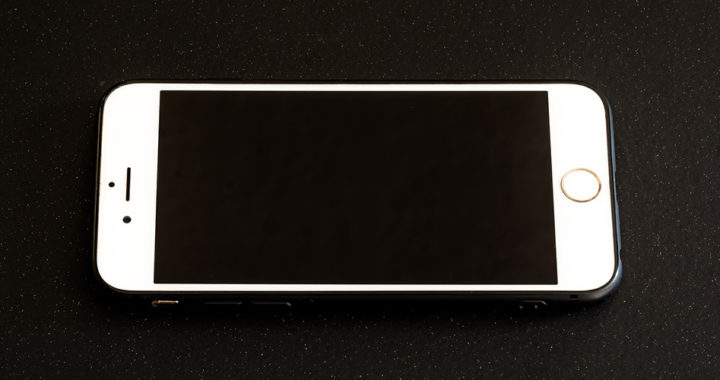Having problem charging your iPhone or iPad? Battery not charging? Or does it take too long to charge fully? Here are the reasons or causes, and the corresponding solutions.
iPhone and iPad battery not charging: Reasons and solutions
1. Problem with the USB charging cable
A common reason why your iPhone or iPad battery is not charging properly is a faulty USB charging cable. The original cable that came along with your iOS device might not be working anymore due to wear and tear. Note that Apple cables are notorious for their short product lifespan.
Cables purchased from third-party manufacturer might stop functioning properly as well after a couple of use due to poor product quality. This scenario is prevalent in the case of cheap cables from unknown manufacturers.
To determine if this is the reason or cause why your iOS device is not charging, check the USB charging cable for signs of damage such as breakage or visible wear on the outer layer. Use a spare cable or borrow one from a family or friend to confirm further.
If the problem is indeed with the USB charging cable, then the best solution is to purchase an original cable from Apple or a third-party cable from an authorized Apple manufacturer. Take note that a faulty USB cable might also be the reason why an iOS device would not connect to a Windows PC or a macOS computer and iTunes.
2. Defective USB wall adapter
The power brick that comes with your iPhone or iPad might not be the problem and not the USB charging cable. However, this is rare but can certainly happen. The primary reason why the USB wall adapter fails to charge the battery of an iOS device properly is hardware defects.
Check the adapter for signs of damage. These include bent or loose AC prongs or blades or blades that do not lock in place or have black marks and other visible damage. Sparks issuing from somewhere other than the blades are also a sign of damage.
Damages in the USB wall adapter might be the result of improper handling, exposure to high temperature, short circuit due to moisture, and problem in the voltage source, among others.
Use another compatible power brick to confirm further if the cause of the battery charging problem is the USB wall adapter. If this is the case, purchase an original replacement from Apple or an Apple-authorized manufacturer. Discard the damaged adapter immediately.
3. Faulty charging pins
The conductive end or charging port found in an iPhone or iPad where the Thunderbolt pin is plugged in might be the reason or cause why the battery is not charging properly. There are several specific reasons as to why this may be the cause.
Dirt and dust accumulate on the charging pin over time. These can prevent the charging port from conduction electricity properly. In this case, lightly clean this with a dry cloth, preferably a microfiber cloth. Use a mini vacuum to blow off dirt and dust further. Beware not to use hot air when blowing off the charging port.
Apart from dirt and dust, damage due to wear and tear or burns due to overheating or short circuit might have rendered the charging pin unable to conduct electricity properly. Have your iOS device checked in an authorized service center. Furthermore, remember that faulty connector pins might also prevent an iOS device from connecting to a computer or iTunes.
4. Connecting to wrong USB port
Another reason why an iPhone or iPad is not charging properly is the connection the wrong USB port. When charging via the computer, make sure that the specific port is a USB 2.0 or higher. Plugging your iPhone or iPad via a USB 1.0 will result in slow battery charging and in some instances, doing so might even discharge your device.
Also, make sure that the computer is not in sleep mode. However, take note that there are laptops that allow USB charging even while in sleep mode.
5. Defective battery
The harsh truth about iOS devices is that the lithium-ion battery has a limited lifespan. A lithium-ion battery has a limited number of charge-discharge cycke, and once it is overused, its performance drops drastically. Signs of degrading battery include faster-than-normal discharge or slower-than-normal charging time until it completely dies out and refuses to charge anymore.
Another factor that can shorten the lifespan of the iPhone or iPad battery is overheating due to exposure to high temperature, moisture-induced short circuit, or short circuit caused by defective USB charging cable or USB wall adapter. Note that overheating damages electronic components. Exposure to low temperatures also shortens the lifespan of the battery.
The obvious solution to this problem is to replace the battery. However, removing the battery in an iOS device is not easy. Make sure to have the battery replaced in an authorized service center. It is also imperative to buy an Apple-certified replacement battery.
6. Software-driven measure
There are instances when an iPhone or iPad stops charging at 80 percent. Note that an iOS device might get slightly warmer while it charges and its internal temperature can further rise due to high ambient temperature.
In the aforementioned instance, the software might limit the charging above 80 percent to prolong the lifespan of the battery and prevent overheating.
The iPhone or iPad battery will resume charging normally when the temperature drops. The best solution is to move your iOS device in a cooler place or to make sure that you charge your device in a cool and dry environment.
7. Damaged motherboard
In the case when the aforementioned reasons are not the cause why your iPhone or iPad battery is not charging properly, it is possible that the problem lies within the hardware or the circuitry of the motherboard.
Reasons for a damaged motherboard chiefly involve offshoots from overheating. Have the iOS device checked in an authorized service center to confirm this.
